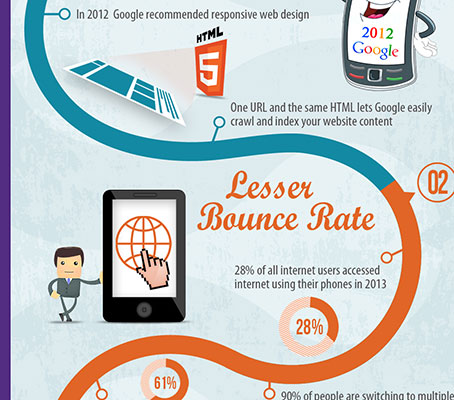The Advancement Of Website Design: After That And Currently
The Advancement Of Website Design: After That And Currently
Blog Article
Short Article Produced By-Pappas Bojesen
In the past, sites were basic and focused on information. Navigating was straight, and design was for desktop computers. Currently, user experience is essential. Information guides layouts for easy navigation. Receptive formats match different tools. Today, dark mode minimizes stress, and minimal menus improve navigation. Interactive attributes engage individuals, and strong visuals stand out. AI integration boosts engagement. See exactly how design has evolved to enhance your on the internet journey.
Very Early Days of Web Design
In the very early days of website design, simpleness reigned supreme. Web sites were standard, with restricted shades, font styles, and formats. related web-site got on offering details instead of fancy visuals. Individuals accessed the internet with slow-moving dial-up links, so rate and capability were vital.
Navigation menus were straightforward, normally located at the top or side of the page. Websites were designed for desktop, as mobile browsing wasn't yet prevalent. Content was king, and designers prioritized very easy readability over complicated design components.
HTML was the primary coding language used, and designers had to work within its restraints. Computer animations and interactive attributes were very little contrasted to today's standards. Internet sites were static, with little dynamic material or tailored individual experiences.
Increase of User-Focused Design
With the advancement of web site layout, a shift towards user-focused style principles has ended up being increasingly popular. Today, creating sites that prioritize individual experience is crucial for involving visitors and attaining company goals. User-focused style includes comprehending the demands, preferences, and behaviors of your target market to tailor the internet site's layout, web content, and features appropriately.
Designers currently conduct comprehensive research study, such as customer surveys and use testing, to collect understandings and responses directly from users. This data-driven technique assists in developing user-friendly navigating, clear calls-to-action, and visually enticing user interfaces that resonate with visitors. By positioning the customer at the center of the design process, web sites can deliver a more individualized and enjoyable experience.
Responsive design has likewise become a key element of user-focused layout, making certain that web sites are maximized for numerous devices and screen sizes. This versatility improves access and use, accommodating the varied ways users interact with sites today. In essence, the rise of user-focused design indicates a change in the direction of producing digital experiences that prioritize the needs and expectations of completion customer.
Modern Trends in Website Design
Check out the latest patterns forming website design today. One famous fad is dark mode layout, supplying a smooth and contemporary appearance while reducing eye strain in low-light environments. An additional key pattern is minimalist navigating, streamlining menus and enhancing user experience by concentrating on essential elements. Integrating micro-interactions, such as computer animated buttons or scrolling results, can develop a much more appealing and interactive site. Responsive style remains important, making sure smooth user experiences throughout different tools. In addition, utilizing strong typography and unbalanced layouts can add aesthetic rate of interest and accentuate specific web content.
Integrating AI modern technology, like chatbots for consumer assistance or individualized referrals, enhances customer engagement and simplifies procedures. Availability has additionally come to be a considerable fad, with developers prioritizing inclusive design techniques to cater to diverse user needs. Welcoming sustainability by maximizing site efficiency for rate and performance is an additional emerging fad in website design. Working together with individual responses and information analytics to repeat and improve style continuously is essential for staying appropriate in the ever-evolving electronic landscape. By welcoming these modern fads, you can produce a visually enticing, straightforward site that reverberates with your audience.
Conclusion
As you reflect on the development of website layout from the very early days to currently, you can see just how user-focused style has actually become the driving pressure behind contemporary trends.
Welcome the journey of adjustment and adjustment in website design, constantly keeping the user experience at the forefront.
Tippingpointdigital
Stay current with the most recent trends and technologies, and never stop evolving your technique to produce aesthetically sensational and straightforward internet sites.
Advance, adapt, and create - the future of web design is in your hands.
